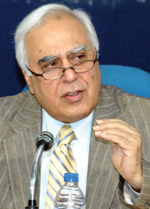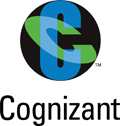INFOTECH INDIA | Tech Briefs
Hiring Slow Down in India
Spending on Green IT to Double
New Smartphone Unveiled
TCS: Bank IT Solution
Intel: India Tech Ventures
e-Governance in Five Years
India has Knowledge, Not Skill: Stagg
Cognizant: Aims Retail Expansion
J-K Craves IT Power
Role of Entrepreneurs
Hiring Slow Down in India
Corporates in India may go slow with their hiring over the next quarter of 2011, but the employment outlook for the country is still among the strongest in the world, according to a survey.
“The survey of 5,118 employers across India indicates that the hiring activity will remain healthy but decline over the next quarter as employers become less confident,” according to the Manpower Employment Outlook Survey.
“Yet, the seasonally adjusted net employment outlook of over 30 percent is among the strongest in the 41 countries and territories where the survey is conducted,” it added.
Employers in the services sector reported the most robust hiring plans this quarter with over 37 percent indicating their intent to recruit, but the sector’s outlook declined by 10 percentage points when compared to the previous quarter and is six percentage points weaker year-on-year.
However, over 32 percent of companies in the manufacturing sector reported a 12 percentage point decline in hiring intentions over last quarter, while 31 percent employers in the transport and utilities sector said there was a marginal improvement in their employment outlook.
Hiring intentions in the public administration and education sectors trailed all other industry sectors.
“In the wake of uncertainties in global markets, employers in India are adopting a wait-and-watch policy. This is probably the reason we are not seeing them commit to the same optimistic hiring plans they reported at the beginning of 2011,” said Sanjay Pandit, managing director of Manpower India that conducted the survey.
“One of every four employers is uncertain about their hiring plan for the last quarter of the year-an unusually high percentage when compared to past quarters,” Pandit added.
The survey, conducted globally, revealed that hiring expectations in the fourth quarter of 2011 are positive in 36 of 41 countries. Hiring intentions were strongest in Brazil, Taiwan, India, Singapore, Panama, New Zealand, Colombia and Hong Kong, and weakest in Greece, Italy Slovenia and Spain.
|TOP|
Spending on Green IT to Double
India’s spending on green IT and sustainability initiatives will double from $35 billion currently to $70 billion in 2015 as they have found their way into the IT industry across India, according to research firm Gartner.
Green computing is the study and practice of designing, manufacturing, using, and disposing of computers, servers, and associated subsystems with minimal or no impact on the environment.
The goals of green computing are to reduce the use of hazardous materials, maximize energy efficiency during the product’s lifetime, and promote the recyclability or biodegradability of defunct products and factory waste.
According to the Gartner report ‘Hype Cycle for Green IT and Sustainability in India, 2011,’ these buzzwords will soon emerge as top priorities for businesses, investors and technology professionals across industries and policymakers in India.
“India’s information and communication technology (ICT) industry will be an early adopter of green IT and sustainability solutions as India is one of the fastest-growing markets in terms of IT hardware and communications infrastructure consumption,” said Ganesh Ramamoorthy, research director at Gartner.
“As enterprises embrace IT to improve productivity and drive growth, penetration of ICT infrastructure has been growing rapidly during the past decade, as has the energy consumption and resulting carbon emissions of India’s ICT infrastructure,” he added.
Apart from the ICT industry, the banking and financial services, hospitality, manufacturing and other industries that have significant exposure to export markets will also join the green IT and sustainability trend early in India.
“Indian businesses will initially start adapting solutions that have been tried and tested in developed nations, but tailored to the Indian market’s needs and conditions,” said Ramamoorthy.
“However, the unique challenges faced by India – such as unreliable power infrastructure, a growing urban-rural divide and increasing population migration to urban areas – will also provide businesses with the opportunity to innovate and test new cost-effective approaches and green technology solutions,” he added.
|TOP|
New Smartphone Unveiled
 Handset maker HTC Corporation unveiled a new smartphone, Explorer, which has a 3.2” HVGA (480 x 320) touchscreen, 3MP camera and 512MB of expandable memory. Handset maker HTC Corporation unveiled a new smartphone, Explorer, which has a 3.2” HVGA (480 x 320) touchscreen, 3MP camera and 512MB of expandable memory.
It comes with integrated HTC Sense technology, a customizable lock screen, new Smart Dialer feature that functions as a real-time window to important information displayed in a one-touch menu and supports Adobe Flash.
“HTC Explorer is an easy-to-use smartphone that puts the customer in control, providing quick access to their most important content and information,” said Jason Mackenzie, president of global sales and marketing, HTC Corporation.
“HTC Explorer is simply a smarter phone for anyone and it represents another clear demonstration of HTC’s global commitment to expanding the market for advanced smartphones.”
The HTC Explorer will be available across EMEA and Asia from Q4 2011 in metallic black, active black and metallic navy colors and in a range of customizable back covers including metallic blue, metallic orange, metallic white and metallic purple.
|TOP|
TCS: Bank IT Solution
 India’s largest IT company, Tata Consultancy Services announced that Deutsche Bank has selected it as a strategic partner for their Production Management Transformation Initiative, within their Capital Markets Business Unit. India’s largest IT company, Tata Consultancy Services announced that Deutsche Bank has selected it as a strategic partner for their Production Management Transformation Initiative, within their Capital Markets Business Unit.
To achieve this transformation, TCS will deliver a global application service desk, service operations and all other ITIL (IT Infrastructure Library) services to the bank at locations across seven countries - USA, UK, Germany, Hungary, Philippines, Singapore and India, according to a press release.
TCS will partner with Deutsche Bank to transform to an ITIL aligned model, aimed at significantly improving service delivery through this framework of best practices.
The team will leverage the concept of ‘Lean’ to eliminate non-value added activities and provide cost efficiencies to the bank.
“Our extensive experience in IT transformation initiatives, industry leading domain capabilities in financial services and long term partnership approach allows us to offer superior value to Deutsche Bank as they look to leverage their strong market position. We are committed to the success of this transformation initiative and will bring our very best capabilities to the engagement,” said Ramanamurthy Magapu, Banking Industry Solutions Unit head at TCS.
|TOP|
Intel: India Tech Ventures
 Intel Capital, Intel’s global investment organization, today said it will continue to support and invest in innovative and technology ventures in India. Intel Capital, Intel’s global investment organization, today said it will continue to support and invest in innovative and technology ventures in India.
“Intel Capital’s mission is to enhance Intel’s strategic objectives by making and managing financially attractive investments in the technology verticals. We want to develop market for Intel products in India,” said Sudheer Kumar Kuppam, Intel Capital’s managing director - India, Japan, ANZ & SE Asia.
Intel Capital had set up a $250 million India Technology Fund back in 2005. The company has invested around 80 percent of this fund, which included the six new Indian technology firms getting investments in this year.
The remaining 20 percent of that fund is expected to exhaust by 2012-end, following which a new fund may be created.
In 2010, Intel Capital invested $327 million in 119 companies with approximately 44 percent of funds invested outside the U.S. and Canada.
According to Kuppam, for Intel Capital - data center and cloud computing, education, smartTV and mobility, software and services and consumer Internet are the core areas of interests for investments.
Banking on India’s growth, Kuppam stressed that India has a great profile - everything is upside with high PC penetration, Internet and mobility. “There are opportunities for investments but very few high quality deals happen here.”
“It’s been a long time since any product innovation company has come from India. However, the growth of infrastructure, 3G mobility and Internet broadband penetration will encourage investment in the Indian companies,” he added.
|TOP|
e-Governance in Five Years
 (Right): Kapil Sibal (PIB photo) (Right): Kapil Sibal (PIB photo)
As the government is leaving no stone unturned to accomplish its ambitious e-governance program, the minister for communications and IT, Kapil Sibal, said there is a need for state governments and other departments to coordinate with the Center to facilitate social participation in e-governance initiative.
The government is making efforts to bring Electronic Services Delivery (ESD) Bill. All the states will be mandated to make the public services available to citizens electronically within five years. Sibal said he’s optimistic about tabling the ESD Bill in next Parliamentary session.
“We need a proper mechanism to eliminate human error and corruption. With e-governance, human interface will be eliminated,” he said. Sibal also said that through this system, strong action will be taken against those who involve in corruption.
“High quality software and a robust IT industry is needed to facilitate fiber optic network to deliver public services in the country,” Sibal said.
The Planning Commission has already said that post offices will have ATMs to facilitate money transfer. The digitization of data including land records is important, believes Sibal.
“All the information related to institutions and colleges should be placed in one place so that students can access and choose where to go,” he said.
Sibal also informed that 11,000 open source courses have been prepared to accomplish the National Knowledge Network mission. He also believes that reforms are highly needed at administrative levels. We need cooperation from the state governments and various departments and institutions to facilitate e-governance services.
|TOP|
India has Knowledge, Not Skill: Stagg

As the country is poised to take a big leap ahead with a billion Internet-enabled population, it has become imperative for the entrepreneurs to develop skills and create innovation.
At TiECon Delhi 2011, British High Commissioner Sir Richard Stagg said that skillsets play a key role in empowering the individuals to become entrepreneurs.
“Personal skill development is the single biggest challenge in India. There is huge population with knowledge but skills are highly needed,” he believes. “Developing the skills for half-a-billion individuals in 10 years is a critical aspect,” Stagg firmly said.
“India should identify the ways so that the outside world could help the country to accomplish this agenda,” he said. Stagg believes that healthcare is another important area. “We need to look at creating the robust delivery system rather than mere building hospitals,” he added.
Stagg suggested India should also look at building infrastructure to the final mile and improve roads to towns and villages where services are required. Governments are providing the right environment and incentives and entrepreneurs should invest energies and money into it, he added.
Citing an example of financial system, Stagg said that banking system in the Western world does not come to rescue economy. Financial institutions should work with investors and facilitate lending for entrepreneurs, he said.
|TOP|
Cognizant: Aims Retail Expansion
 Cognizant, a provider of IT, consulting, and business process outsourcing services, has acquired substantially all of the assets of Zaffera, LLC, a strategic SAP retail consulting and software development firm based in Princeton. Cognizant, a provider of IT, consulting, and business process outsourcing services, has acquired substantially all of the assets of Zaffera, LLC, a strategic SAP retail consulting and software development firm based in Princeton.
The acquisition will expand Cognizant’s ability to provide SAP consulting and software solutions to help major retailers gain better insights into their business, streamline operations, enhance customer satisfaction, etc, according to a press release.
Like Cognizant, Zaffera helps the world’s top retail brands navigate the rapid changes in the retail sector brought about by new technology and demographic shifts.
To provide retailers with real-time visibility into what products are on their shelves, the rate at which they are selling, and who is buying them, Zaffera has developed a portfolio of SAP retail solutions and accelerators in areas such as business analytics, retail planning, point-of-sale (POS) integration, and store operations.
“The retail industry is facing intense economic and competitive pressures. The advent of new technologies like social media and mobility have created a more empowered, savvy consumer, and retailers are working harder than ever to attract and retain customers in the face of thin margins,” said Francisco D’Souza, president and CEO, Cognizant.
According to D’Souza, the acquisition will strengthen its ability to help retailers address these challenges and seize new opportunities created by multi-channel retailing.
“Zaffera’s outstanding consulting expertise and software solutions will enhance Cognizant’s rapidly growing SAP retail practice and our ability to deliver complex, large-scale global business transformations,” he added.
“As part of Cognizant, we can offer our retail clients greater scale, a broader range of services, and world-leading consulting and business process expertise to help them meet new market demands. Together, we will combine business insights, state-of-the-art technology and a client-first approach to create industry-leading solutions to complex supply chain management, merchandising, eCommerce, and store-management challenges,” said Jim McMurray, CEO, Zaffera.
|TOP|
J-K Craves IT Power
Reeling under terror and public unrest, Jammu and Kashmir wants to be noticed by the IT industry. The state government believes that it’s safer now and hence wants industry to treat it as any other state. The J-K government is working on IT policy framework and implementing the Prime Minister’s scheme for development of IT at block level.
Speaking on the sidelines of a recent industry summit in New Delhi, Aga Syed Ruhullah Mehdi, minister for IT, government of J-K, said that IT is an enabler for empowerment in the country while availability of data and connectivity are some of the challenges.
There is a constant need to evolve services and technologies, he said. Citing the example of Kerala, Mehdi said that the state has jumped onto the mobile bandwagon and started public-centric services through SMS. Citizens can apply for services via SMS in Kerala, he added.
He said the J-K government is working on the IT policy framework to attract investors in the state. The expected policy may look at incentives and subsidies to the companies willing to set up operations in the state. “Going forward, J-K wants to compete with the states of Gujarat and Karnataka and it’s as safe as any other state in the country,” Mehdi said.
Challenge is always there and technology is advancing each passing day, he believes. “There is immense opportunity in the state of J-K,” Mehdi said. “We are trying to connect every administrative level with state-wide area network (SWAN).” He also said that there is a need to develop database and bring it to every citizen’s doorstep.
|TOP|
Role of Entrepreneurs
The government is dedicated to provide broadband access to the length and breadth of the country in 2-3 years, said R. Chandrashekhar, secretary, ministry of communications and IT, at TiECon Delhi-2011.
Elaborating on the government plans, he said there is an effort to create the right environment where entrepreneurs need to play a major role. He also said that the government is looking at on-demand access to broadband to empower 1 billion Indians.
“As we have now close to 900 million mobile subscribers, the government is dedicated to provide broadband access to the length and breadth of the country within next 2-3 years timeframe,” he said.
Chandrashekhar also said there is a need to look at innovation to maximize efficiencies. “Relevant and appropriate innovation is highly needed. IT sector has evolved and is currently at $88 billion which is poised to be $100 billion this year,” he said.
“The design and R&D will make an impact globally while challenges are most rewarding in the country like India that can change the social landscape,” he said. With the advent of broadband and phenomenal telephony penetration, Chandrashekhar said that people are excited about the developments in the IT industry.
The government is taking a conscious view in the electronics segment. The government sees that the growth in IT sector can’t be possible without a foolproof roadmap for electronics, he said.
He also stressed that entrepreneurs should look at innovation in electronics too. The need for a full-fledged policy on electronics has surfaced and the government is putting a lot of efforts into it. With new electronics policy round the corner, he said that the focus would be on clear objectives and strategies.
|TOP|
|